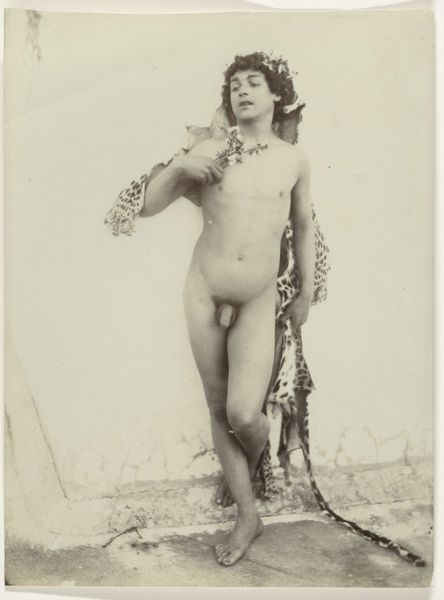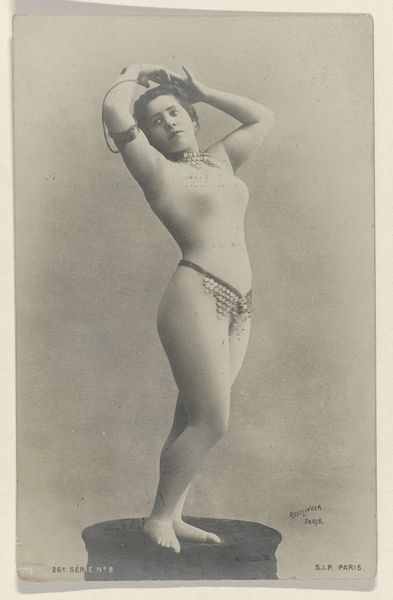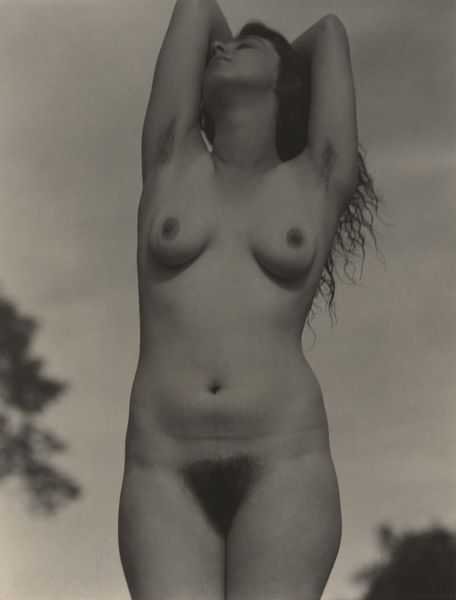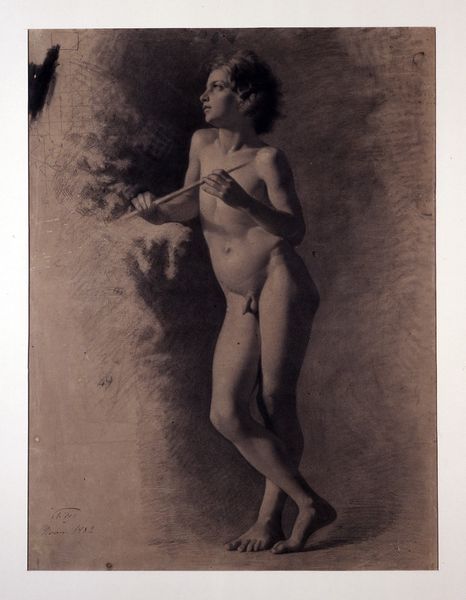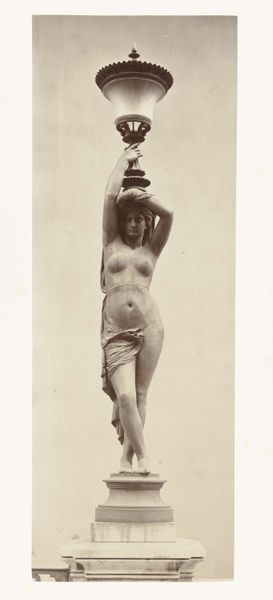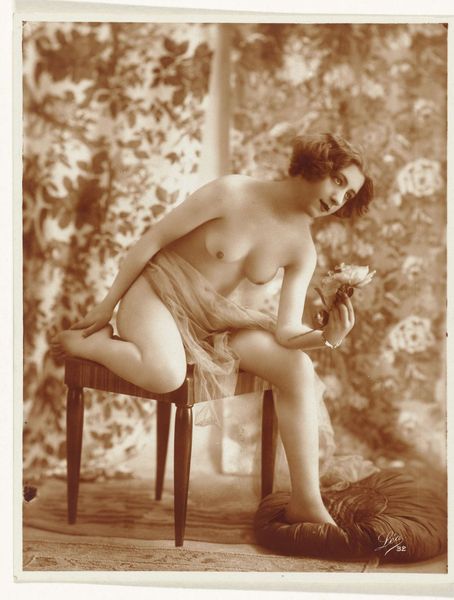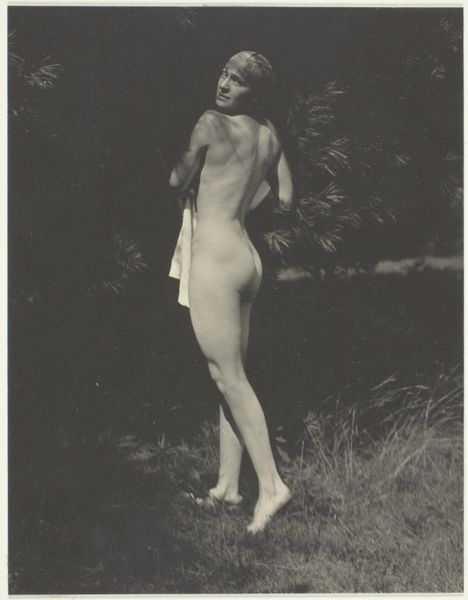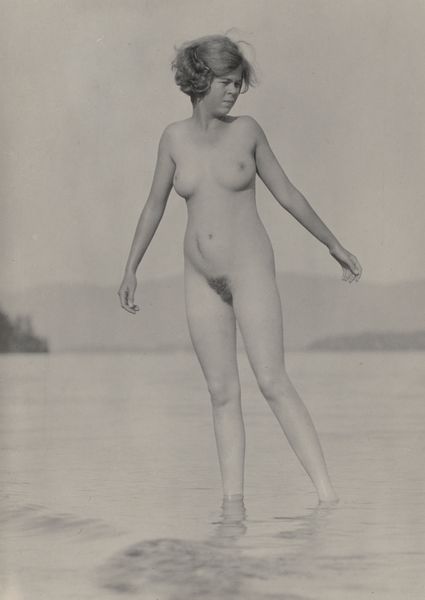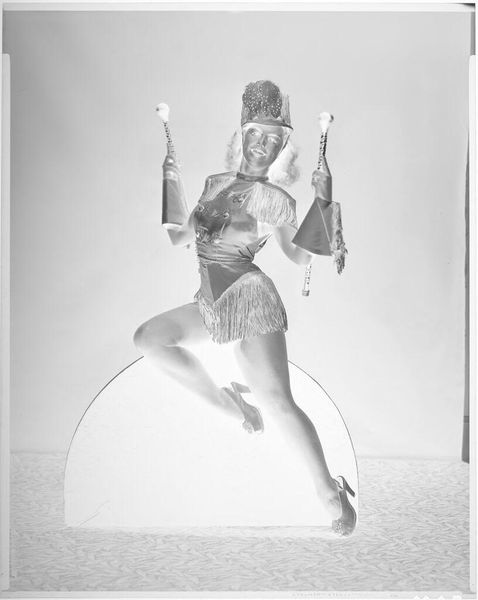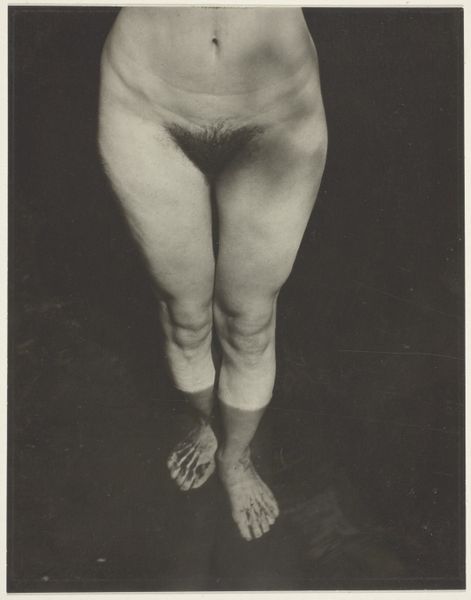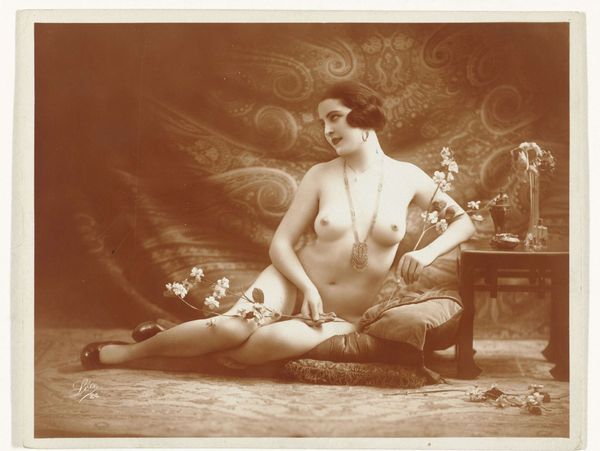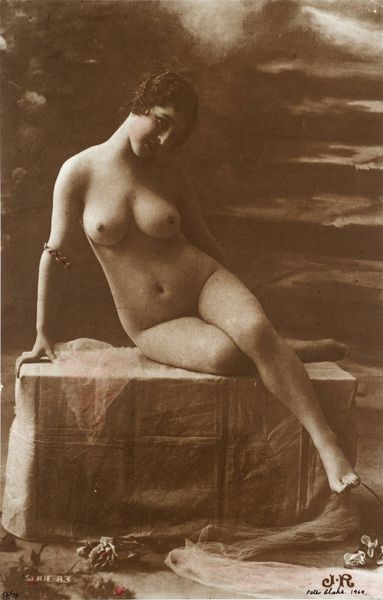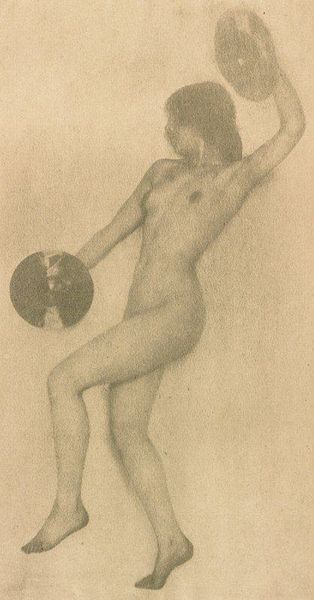
Dimensions: height 135 mm, width 86 mm
Copyright: Rijks Museum: Open Domain
Editor: Here we have "Portret van bijna naakte vrouw met sieraden" by Walery, dating from between 1900 and 1935. It's a black and white photograph and is, quite strikingly, a portrait of a woman with very few clothes and a lot of jewellery. What is your interpretation of this work? Curator: Well, let's look closely at those materials. We're dealing with early photography, right? Consider the socio-economic context. These beaded necklaces weren't mass produced. This points us to examining craft and labor in adornment; Who is making this jewelry, and how? Also, observe the paper stock. Photography had different economic and social value in that era. What does the mass production of images like these, or the staged "naturalness", mean for consumption and value in art and culture? Editor: That's an interesting point. I hadn't thought about the implications of the materials themselves. So the image itself isn't just an image, but an object representing specific labor processes? Curator: Precisely. The model's presentation itself is manufactured, but think of her labor. How does it feel for the model, in the setting of mass reproduction? Editor: And, considering that this is held by the Rijksmuseum, it has been elevated beyond just a photograph, to high art. It makes me wonder what everyday photographs from the time period have been lost, or were never valued to begin with. Curator: Exactly. These photographs speak volumes about value, process and accessibility. Editor: Thanks, I had not considered the photograph's materials as a commentary. Curator: Exploring these elements opens up our understanding. There's so much hidden in the everyday object, isn't it?
Comments
No comments
Be the first to comment and join the conversation on the ultimate creative platform.
